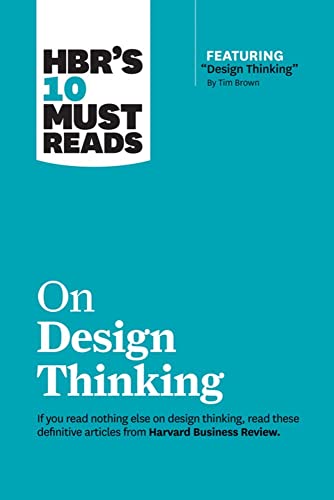Systems thinking is an approach to problem-solving that embraces viewing complex systems as a whole, rather than focusing on individual components. This holistic perspective can lead to more effective and sustainable solutions, as it takes into account the interconnectedness of various elements within a system. Those interested in adopting this way of thinking will benefit greatly from delving into the wealth of literature on the subject.
Books on systems thinking provide valuable insights into how systems operate and evolve, and offer practical tools and techniques to analyze and understand various systems, ranging from organizations to ecosystems. As the world becomes increasingly complex, the ability to think systemically is a crucial skill for leaders, managers, and decision-makers in all fields.
When selecting the best books on systems thinking, it’s essential to pay attention to the experience and expertise of the author, the accessibility of the content, and the range of examples and applications covered. Moreover, consider whether the book focuses on introducing systems thinking, delving into advanced concepts, or providing practical guidance.
We researched and reviewed several books on systems thinking to identify those that are most effective in imparting a deep understanding of this essential concept and providing tools for practical application. Read on to explore our top recommendations, along with insightful descriptions and highlights from each book that will help you choose the one that suits your needs best.
Best Books on Systems Thinking
We have carefully curated a list of the best books on systems thinking to help you better understand and apply this valuable approach in various aspects of life and work. Dive into our top picks to explore the intricate world of interconnected systems and transform the way you perceive and navigate complex situations.
HBR’s 10 Must Reads on Design Thinking


We recommend this book for those looking to gain insight into design thinking and its applications in business.
Pros
- Comprehensive collection of articles
- Clear and concise writing
- Provides practical guidance
Cons
- Some content may be repetitive
- Not as in-depth as other design thinking books
- Better suited for beginners
Having read HBR’s 10 Must Reads on Design Thinking, we found it to be a valuable resource for individuals seeking to understand design thinking concepts and their relevance in the business world. The book features a collection of articles that provide a solid foundation of knowledge, with clear and concise writing that makes the content easily digestible.
One of the strengths of this book is its practical guidance, offering actionable steps for readers to implement design thinking in their organizations. The diverse range of topics covered ensures a well-rounded understanding of design thinking principles and their applications.
However, there are some drawbacks to this book. While it offers a comprehensive overview, some content may feel repetitive for those already familiar with design thinking. Additionally, the book does not delve as deeply into the subject as other design thinking books, such as Dan Brown’s Design of Things, and may thus be better suited for beginners.
In conclusion, HBR’s 10 Must Reads on Design Thinking is a worthwhile read for those looking to gain a foundational understanding of design thinking and learn how to apply it in a business context. Its practical guidance and clear writing make it an accessible resource, although more advanced readers may want to explore other, more in-depth resources on the subject.
Stop Overthinking: 23 Techniques to Relieve Stress


This book is a valuable resource for those looking to reduce stress, declutter their minds, and focus on the present moment.
Pros
- Practical and effective techniques
- Relatable and easy to understand
- Useful for a variety of situations
Cons
- Some readers might find it heavy going
- Not highly visual
- May require multiple reads to fully absorb
From our own experience with “Stop Overthinking,” we’ve found the techniques provided to be incredibly helpful for getting our thoughts under control and reducing stress in our lives. The book effectively covers 23 different strategies to help manage overthinking and negative spirals, making it applicable in a wide range of situations.
The language used throughout the book is relatable and straightforward, contributing to its ease of understanding. The techniques provided are practical, and we enjoyed being able to apply them to our daily lives immediately after reading about them.
However, some of us found the book to be a bit heavy going at times, which might make it challenging for some readers to digest. The book lacks visual aids, which may be a drawback for those who prefer a more visual learning experience. Additionally, some readers may need to read through the book more than once to fully absorb and benefit from the information provided.
Overall, “Stop Overthinking” offers an insightful approach to managing stress and decluttering the mind. We highly recommend it to anyone who struggles with overthinking and seeks practical techniques to improve their mental well-being.
The Tools of Argument: How the Best Lawyers Think, Argue, and Win


A valuable resource for anyone looking to improve their argumentation skills and critical thinking ability.
Pros
- Comprehensive and concise content
- Engaging real-world examples
- Easy-to-understand language
Cons
- Some readers might find it dense
- Limited to the legal perspective
- Requires focused attention to grasp concepts
We recently read “The Tools of Argument: How the Best Lawyers Think, Argue, and Win” by Joel Trachtman and found it to be an informative and comprehensive guide to understanding and mastering the art of argumentation. The book delves into the strategies employed by skilled lawyers and teaches readers how to apply these techniques in everyday conversations and debates.
What sets this book apart is its engaging approach to presenting the concepts with a variety of real-world examples and scenarios. This helps to demonstrate the importance of critical thinking and effective communication. While the book is geared towards the legal profession, we found the techniques to be applicable to various areas of life such as work, personal relationships, and social situations.
The language used in “The Tools of Argument” is simple and easy to understand, making it accessible to beginners. However, it’s important to note that the concepts presented can be dense at times and require focused attention. This book is geared more towards individuals who are serious about improving their argumentation skills and critical thinking abilities.
Although the book’s primary focus is on the legal perspective, we believe that the techniques and strategies shared in this book are helpful for anyone seeking to enhance their persuasive skills and overall understanding of different perspectives.
In conclusion, “The Tools of Argument: How the Best Lawyers Think, Argue, and Win” is a valuable resource for those who want to sharpen their critical thinking and argumentation abilities. The real-world examples provided make this book a significant addition to one’s personal development library. However, readers must be prepared to devote time and energy to truly understand and implement the concepts shared in this book.
Ackoff’s Best: His Classic Writings on Management


A must-read for those interested in systems thinking and its application in management, showcasing some of Russell Ackoff’s most enlightening pieces.
Pros
- Comprehensive collection of Ackoff’s writings
- Covers a broad range of topics
- Engaging and witty writing style
Cons
- Some claims lack strong evidence
- May require deep focus and rereading
- Content is decades old, but still relevant
We recently read “Ackoff’s Best: His Classic Writings on Management” and found it to be a valuable resource for exploring systems thinking. This book brings together a variety of chapters, reports, and articles that Russell Ackoff wrote over several decades, seamlessly forming a coherent whole. His writings span numerous topics, such as crime, education, psychology, and management, providing a well-rounded understanding of systems thinking and its applications.
Ackoff’s writing style is engaging and witty, making it an enjoyable read while conveying complex ideas. He demonstrates his brilliance as a thinker, with ideas that were ahead of his time. However, we noticed that some of the claims in the book lack substantial evidence to back them up, which can occasionally detract from the overall strength of the content.
Given the depth and insightfulness of the material, it might be necessary to reread certain sections or dedicate more focus to fully grasp the concepts. Although the content dates back a few decades, the book contains many valuable discoveries and thoughts that remain relevant today.
In conclusion, “Ackoff’s Best: His Classic Writings on Management” is an excellent resource for individuals who want to delve into systems thinking and its practical application in various domains. Despite a few drawbacks, it offers a comprehensive and engaging exploration of Ackoff’s work that we think is well worth the read.
Introduction to Robotics: Analysis, Control, Applications


A must-have book for robotics enthusiasts looking to expand their knowledge on control and applications.
Pros
- Comprehensive guide on robotics
- Presents real-world examples and case studies
- 3rd edition ensures updated content
Cons
- Content can be challenging for beginners
- Heavy on technical jargon
- High price point
We recently got our hands on the third edition of “Introduction to Robotics: Analysis, Control, Applications.” Right away, we were impressed by the comprehensiveness of this guide. The level of detail provided in its 528 pages offers deep insights into various aspects of robotics. It presents complex concepts clearly and is supported by real-world examples and case studies, which we found quite valuable in applying what we learned.
However, we must say that this book may be challenging for beginners with limited prior knowledge of robotics. The technical jargon can sometimes be overwhelming, but with some perseverance, it is possible to grasp the concepts. We also noticed that the price point is on the higher side, which may be a deciding factor for some potential buyers.
Despite the cons, we believe “Introduction to Robotics: Analysis, Control, Applications” would be a great addition to any robotics enthusiast’s library. The updated content in the third edition ensures you stay informed about the latest in the field. Overall, this book is a valuable resource for anyone looking to dive deeper into all aspects of robotics, and we highly recommend it.
What Happened to You?: Conversations on Trauma, Resilience, and Healing


We believe this book is a valuable resource for understanding the impact of trauma and fostering resilience and healing in oneself or others.
Pros
- Provides deep insights into the human brain and trauma
- Engaging conversational style between the authors
- Encourages compassion and self-understanding
Cons
- Some readers may find the content basic if they are already well-versed in the topic
- Cover quality might be inconsistent in some copies
- Audio version might not be suitable for those who prefer reading
We recently delved into “What Happened to You?: Conversations on Trauma, Resilience, and Healing” by Oprah Winfrey and Bruce D. Perry, and we found it to be an eye-opening experience. Through conversations between the authors, this book offers valuable insights into the intricacies of the human brain, particularly how childhood trauma can affect one’s behavior and mental well-being.
As we continued reading the book, we were struck by the engaging conversational style between Oprah and Dr. Perry. It felt like we were eavesdropping on a thought-provoking dialogue between friends, making the complex topic of trauma easier to understand. Furthermore, this book helped foster a sense of compassion and self-understanding for our own experiences and helped us realize that healing is possible.
However, we noted that some readers, already familiar with the subject matter, might find the material to be too basic. Additionally, there have been occasional reports of poor cover quality in some copies of the physical book. Lastly, while we thoroughly enjoyed the audiobook format, it might not be suitable for those who prefer reading text or find it difficult to retain information audibly.
In conclusion, “What Happened to You?: Conversations on Trauma, Resilience, and Healing” is a captivating and insightful resource for those looking to better understand trauma and its lasting effects. While some may find the content basic or may prefer a text format, we believe that this book provides valuable lessons on compassion and self-understanding, making it a must-read for anyone affected by trauma or seeking to support others in their healing journey.
Trading to 2030 Guide


We believe this book is a valuable resource for those looking to invest ethically and successfully in the coming decade.
Pros
- Comprehensive guide on ethical investments
- Practical advice for beginners and experts
- Easy-to-understand explanations
Cons
- Not focused on short-term investments
- Limited to English language
- Lacks X-Ray feature for in-depth exploration
We recently stumbled upon the Trading to 2030 Guide and were pleasantly surprised by its informative content. The book covers a variety of topics related to ethical investments, making it a great resource for those looking to enrich their financial decisions with a moral compass. It provides insightful advice for both beginners and experts, ensuring that every reader can find value in its pages.
As we dove deeper into the book, we appreciated the clear and concise explanations provided. The author managed to strike a balance between being informative and engaging, making it a smooth read for anyone. We found the tips and strategies to be practical and valuable, equipping us with the knowledge to make better-informed decisions in the investment world.
However, we noticed that the Trading to 2030 Guide primarily focuses on long-term investments. While this can be beneficial for those who plan to stay in the market for an extended period, it might not cater to investors looking for short-term gains. Additionally, the book is only available in English, which may limit its reach to a global audience. And finally, the lack of X-Ray feature may be a minor drawback for readers who like to dig deeper into specific topics.
Despite these limitations, we believe that the Trading to 2030 Guide is a valuable addition to any investor’s library. Its focus on ethical investments and practical advice make it a must-read for anyone looking to invest intelligently and morally in the coming years.
Business Analyst’s Mentor Book


This book is a valuable resource for professionals looking to improve their business analysis skills and gain practical insights.
Pros
- Covers a wide range of business analysis topics
- Offers practical software requirements management tips
- Written by an experienced author with real-world insights
Cons
- Some readers find the content too high level
- Lack of detailed examples or diagrams
- May not be ideal for those seeking in-depth how-to guides
The Business Analyst’s Mentor Book provides a comprehensive overview of best practice business analysis techniques and software requirements management tips. The content is wide-ranging, and we found it to be well-organized, making the learning experience enjoyable and practical.
We appreciated the author’s background and real-world knowledge, which is clear throughout the book. This lends credibility to the advice and, ultimately, instills confidence in readers looking to enhance their business analysis skills. However, some readers might find the content to be too high-level for their needs.
While the book covers numerous essential topics in business analysis, it lacks detailed examples, diagrams, or step-by-step instructions for those seeking in-depth guidance. This could be a drawback for some readers who might find it harder to apply the knowledge gained from the book.
In conclusion, the Business Analyst’s Mentor Book is a valuable resource for those seeking to improve their business analysis skills, and it offers practical insights from an experienced author. However, the content may be too high-level for some readers or those looking for in-depth guidance.
The Culture System: A Proven Process for Creating an Extraordinary Team Culture


“The Culture System” is a must-read for anyone looking to develop an extraordinary team culture in their organization.
Pros
- Detailed step-by-step process for creating a team culture
- Practical advice and real-life examples
- Well-organized and easy to read
Cons
- May be more focused on high school/college coaching
- Some sections could be more concise
- Not all information may be applicable to every reader
“The Culture System: A Proven Process for Creating an Extraordinary Team Culture” provides a comprehensive guide on how to establish a successful team culture. We were impressed with the detailed roadmap for culture development, which is adaptable to different environments and settings.
The book’s practical approach, illustrated with real-life examples, makes the content accessible and relevant for readers. We benefited from the insights on developing and implementing strategies for enhancing our team’s performance and synergy.
However, some of the content seems to be more focused on high school and college coaching, which may not be applicable to everyone. Additionally, while most of the book is well-organized, there were a few sections that might have been more concise to keep readers focused on the most critical aspects of culture development.
In conclusion, we recommend “The Culture System” for anyone looking to create or improve their team’s culture. The practical advice and step-by-step guide make this book a valuable resource for individuals and organizations striving to achieve success through a strong team culture.
Not with a Bug, But with a Sticker


An insightful read that guides readers through the world of machine learning security threats and offers valuable knowledge on handling potential vulnerabilities.
Pros
- Comprehensive coverage of machine learning attacks
- Real-world examples and case studies
- Easy to understand for a generalist audience
Cons
- Dense technical jargon at times
- Not broad enough for advanced ML enthusiasts
- Hardcover could be a bit heavy for some
We recently dove into “Not with a Bug, But with a Sticker,” and got a fascinating look at the world of machine learning vulnerabilities. Authored by Ram Shankar Siva Kumar and Hyrum Anderson, this book offers an engaging analysis of the various threats and risks posed in the realm of machine learning systems. Throughout the book, the authors take the readers on a journey filled with practical examples, making the learning experience both enjoyable and informative.
While exploring the content, we discovered that the authors have done a commendable job of discussing machine learning attacks in depth. The coverage of real-world examples and case studies helps readers grasp the severity of the threats, and aids them in developing reliable solutions. Though the book delves into some technical jargon at times, it remains accessible to a general audience without needing extensive background knowledge.
On the other hand, we observed that the book might be a bit dense in certain areas, which could be challenging for some readers to comprehend. For those with advanced knowledge in machine learning systems, the book may not be broad enough in terms of content. Additionally, the hardcover format of the book might prove to be a little too heavy for some individuals.
Overall, we highly recommend “Not with a Bug, But with a Sticker” to anyone interested in understanding the risks and vulnerabilities concerning machine learning systems. With its comprehensive coverage and engaging writing style, this book is a valuable addition to the field of ML security.
Buying Guide
When looking for the best books on systems thinking, there are several factors to consider. Every reader’s educational background and interests may vary, so it’s essential to choose books that resonate with us and align with our learning objectives.
Understand your goals: Determine what you want to gain from studying systems thinking. Are you looking to apply it to your career, solve complex problems, or gain a new perspective on how systems work? This understanding will help you find books that focus on relevant topics and applications.
Check the author’s background: Make sure the authors have a strong background in systems thinking and have experience applying it in real-world situations. Look for authors with expertise in diverse disciplines, as systems thinking can be applied across various fields such as business, engineering, and social sciences.
Read reviews and recommendations: Reading reviews and seeking recommendations from others can provide valuable insights into whether a book is worth your time. Look for books that offer a good balance between theory and practical examples, as well as those that are clear, concise, and engaging.
Complexity level: Consider the complexity of the language and concepts presented in the books. There are books that cater to beginners with no background in systems thinking, while others are more advanced and require a solid understanding of foundational concepts. Choose books that match your current knowledge and desired learning pace.
We hope that by considering these factors, you’ll find the perfect systems thinking book to enrich your knowledge and enhance your problem-solving abilities. Remember, the key is to make an informed decision that aligns with your learning objectives and interests.
Frequently Asked Questions
Top books for learning systems thinking?
We recommend the following books for those wishing to learn more about systems thinking:
- “Thinking in Systems” by Donella H. Meadows
- “The Fifth Discipline” by Peter Senge
- “The Systems Thinker” by Albert Rutherford
These books provide a solid foundation on the key concepts and principles of systems thinking.
Essential systems thinking books for beginners?
For beginners, we recommend starting with:
- “Thinking in Systems” by Donella H. Meadows
- “The Systems Thinker: Essential Thinking Skills for Solving Problems, Managing Chaos, and Creating Lasting Solutions in a Complex World” by Wallace Goulder
Both books offer a great introduction to systems thinking for those who are new to the topic.
Which books offer a deep dive into systems thinking?
If you’re looking to dive deeper into systems thinking, consider these books:
- “Systems Thinking, System Dynamics: Managing Change and Complexity” by Jamshid Gharajedaghi
- “An Introduction to General Systems Thinking” by Gerald M. Weinberg
These books provide more comprehensive coverage of systems thinking concepts and techniques.
What are the must-read books for systems thinkers?
Must-read books for systems thinkers include:
- “The Fifth Discipline: The Art & Practice of The Learning Organization” by Peter Senge
- “Business Dynamics: Systems Thinking and Modeling for a Complex World” by John Sterman
These books offer insights into the application of systems thinking in various domains and industries.
Which books have practical examples of systems thinking?
For practical examples of systems thinking in action, check out:
- “Applied Systems Thinking: Unlocking the Dynamics of Complex Systems” by Alex Backer
- “Systems Thinking: Coping with 21st Century Problems” by John Boardman and Brian Sauser
These books provide case studies and real-world applications of systems thinking principles.
Influential authors in systems thinking include Donella H. Meadows, Peter Senge, and Russell L. Ackoff. Their work forms the foundation of much of modern systems thinking and continues to have a lasting impact on the field.





